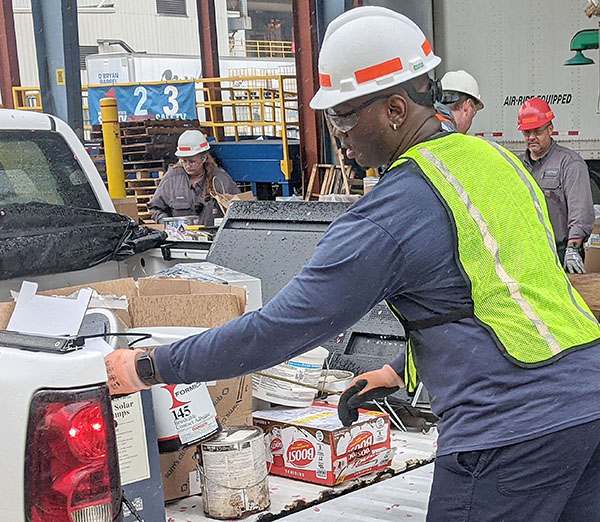EAST LIVERPOOL, Ohio – Air emissions of dioxin are more than 50 times lower than the national standard for clean air, according to the final results of tests conducted last month at the Heritage Thermal Services treatment facility.
Results of the tests, which have been forwarded to U.S. and Ohio environmental agencies, averaged 0.004 billionths of a gram per cubic meter of air. The U.S. EPA’s clean-air standard allows for 0.2 billionths of a gram in each cubic meter of air that flows from the stack. For perspective, there are about 28 grams in a single ounce.
The three-part, dioxin-specific test was conducted Oct. 3 – 4. The steps Heritage-followed for conducting the test, which is required every two-and-a-half years, were approved in advance by U.S. and Ohio environmental regulators. The plan was also available to the public for review and comment.
Under the Maximum Achievable Control Technology Rule for Hazardous Waste Combustors, the U.S. EPA regulates dioxin emissions more stringently and uniformly than before the regulation went into effect. Heritage was the first commercial hazardous waste incinerator in America to demonstrate compliance with all of the rule’s requirements, including the one for air emissions of dioxin.
Dioxin is a generic term for a group of 210 chlorine-related compounds, known as dioxins and furans. The compounds are generated by various industrial activities and natural sources, such as forest fires.
More News From Heritage
-
10/14/24
Heritage Environmental Services Announces Timothy Thomas as Chief Operating Officer
Heritage Environmental Services (“HES”), an EQT Infrastructure portfolio company, announced today that Timothy Thomas will join the organization as Ch
-
10/1/24
Heritage Environmental Services Complete Acquisition of EBV from General Dynamics
Heritage Environmental Services, an EQT Infrastructure portfolio company, has completed the acquisition of EBV from General Dynamics.
-
7/31/24
PFAS Regulations: Is 6 the Magic Number?
Learn more about the current and proposed regulation for PFAS and what they mean from our Chief Sustainability and Innovation Officer, Angie Martin.
-
6/27/24
Heritage Environmental Services to Acquire EBV from General Dynamics
Heritage Environmental Servicess, an EQT Infrastructure portfolio company, will acquire EBV from General Dynamics
-
6/13/24
Meet The Facilities – East Liverpool
An inside look at our incineration facility located in East Liverpool, OH
-
5/24/24
Habitat for Humanity 2024
Heritage hosted our 14th annual Habitat for Humanity build this month, partnering with over 50 employees from various THG companies.
-
5/6/24
Date set for the household hazardous waste collection in East Liverpool, Ohio
-
3/12/24
Equal Pay Day – Spotlighting Our Female Drivers








